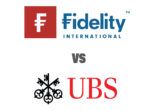The firm’s Asian High Yield Bond Fund, available to accredited investors in Singapore, is different from peer funds, Zeeh believes. While a lot of bond funds are short dated at 2-3 years, the S.E.A. fund’s average duration is below two years.
“Other funds are either short duration or high yield. We are both,” he said. “We are also free from a benchmark.
“We buy to hold to maturity. We don’t trade, we want accrued interest.”
The gross yield of the portfolio before fees is 9-10%, Zeeh said. The manager looks for issuance yielding 6-9%, though some investments yield 10%.
The fund was launched in March 2015 and so far has not had any defaults, Zeeh said.
Investments are mainly in corporate bonds, which are hedged to US dollars to avoid currency risk, he said. The average rating is B- but half the bonds in the portfolio are unrated.
“Even non-rated companies have to publish financials. You can get a pretty good idea of 12-18 months visibility if you have company financials, but longer than that is speculative.”
High yield vetting
The portfolio holds 40-50 positions, with Singapore the highest geographic exposure (30%). Last year, when Singapore’s Swissco Holdings defaulted on its bond payments, a sell-off in the entire Singapore dollar bond market ensued. The portfolio manager, Gallen Tay, took it as a buying opportunity, Zeeh said.
Other geographic exposure includes Hong Kong and China at 12% each, Indonesia (7%) and India (6%).
The firm does fundamental bottom up research and the manager meets with the companies they invest in. The vetting process involves looking at the financials, shareholdings and assets to determine how likely the company can sell off these assets, he said.
“The company may not have good credit, but can they repay that bond if they must restructure?”
Limiting drawdowns
Risk controls include high diversification. “A Sicav fund allows up to 10% in a single position, but we try to stay below 3%,” Zeeh said.
“[With this diversification] in case there is a default, which we are trying to avoid at all costs, the impact would be small and the fund still can have a positive return for the year.”
In 2016, the fund (launched in March 2015) had a 2-3% maximum drawdown. Zeeh said the RMB devaluation, the China stock market crash and the drop in the Indonesian rupiah together caused a sell-off impacting all Asian bond funds.
He believes diversification has helped limit drawdowns.
“The Asian bond market is 60% China and we have 12% China in the fund. We are extremely underweight.”
The only Chinese property bond the fund holds is Parkson Retail, which is 3% of the portfolio.
“We’re trying to buy less leveraged companies. If something goes wrong in China, all the big global name high yield funds with a 60% China weighting will likely drop 20% or more. A bond fund shouldn’t give you that much volatility.”
The biggest risk is fraud, particularly in China, where companies may maintain different sets of accounting books for regulators, investors and management, he said.
A pullback in global trade would hurt the portfolio as well. But Zeeh said due to the average duration of 1.4 years, invested companies have assets and cash and resources to repay bonds in that time frame.
“If global trade declines and US trade policies lead to retaliatory trade barriers from other countries, it would take more than 1.5 years to hit the global economy,” he said.
___________________________________________________________
The S.E.A. fund vs other Asian high yield bond funds for the period 15 July 2016 (the earliest data avalable) – 31 December 2016, according to FE data.

















